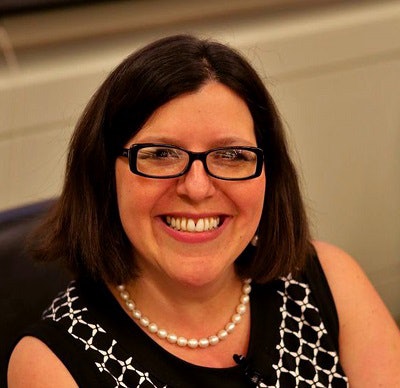A new report released this week presents data indicating that more students experience upward economic mobility at Historically Black Colleges and Universities (HBCUs) than at Predominantly White Institutions (PWIs).
The report titled, “Moving Upward and Onward: Income Mobility at Historically Black Colleges and Universities” released by the Samuel DeWitt Proctor Institute for Leadership, Equity & Justice at Rutgers Graduate School of Education examines intergenerational income mobility of recent HBCU graduates, comparing it to upward mobility and economic stratification at other institutions.
In the forward to the report, Dr. Walter M. Kimbrough, president of Dillard University, wrote that HBCUs have consistently supported low-income and Pell Grant-eligible students, which has enabled these graduates to enter the middle class.
“Sometimes when people look at graduation rates or retention rates of HBCUs they compare those to institutions, usually PWIs, that don’t have as many low-income students or Pell Grant-eligible students, and that’s really not a fair comparison,” said Dr. Marybeth Gasman, the Samuel DeWitt Proctor Endowed Chair in Education and Distinguished Professor in the Graduate School of Education at Rutgers University. “We found in this data set that HBCUs were enrolling higher numbers of low-income students. What that says to us is that they are doing the lion’s share of the work when it comes to low-income, African-American students, and they’re having to add a great deal to the experiences of the students because a lot of these students have come in under-prepared,” Gasman added.
 Dr. Marybeth Gasman
Dr. Marybeth GasmanGasman collaborated with Dr. Robert A. Nathenson, research specialist for the Consortium for Policy Research in Education at the Graduate School of Education at the University of Pennsylvania and Dr. Andrés Castro Samayoa of Boston College. They studied the data provided by Harvard University economist Dr. Raj Chetty.
Gasman, whose research focuses on minority-serving institutions, said she constantly hears questions about the relevance of HBCUs. By spotlighting the social and economic mobility of HBCUs graduates, there leaves little question as to the impact and importance of these historic institutions.
The report tracks the mobility rate of students when compared to the incomes of their parents. Nearly 70 percent of HBCU students reach at least middle-class incomes. The expectation for low-income students to improve their economic position is high. Of the 50 HBCUs examined, Xavier University of Louisiana and Tuskegee University achieve particularly high mobility.
“While we acknowledge having data on only half of HBCUs as a potential limitation, we have information on a greater number of HBCUs than previous work in the area…and all the institutions for which we have data are geographically representative of all HBCUs,” said Nathenson. “The set of [115] comparison PWIs are located within the same commuting zone of at least one of these HBCUs and are of similar institutional selectivity.”
Not only do HBCUs enroll more low-income students and generally cost less, but they also have fewer institutional resources per student than PWIs. While HBCU students’ median earnings are less than students at PWIs, this report takes a more holistic approach that shows HBCU students have more upward mobility than students who attend PWIs.
By comparing the income of parents and students, the report noted more than half of all students at HBCUs experience some measure of upward mobility, and upward mobility is about 50 percent higher at HBCUs than PWIs, due to PWIs enrolling less lower-income students.
“We’ve been able to empirically show with quantitative analysis that HBCUs are making these contributions,” said Gasman. “When you can have a large scale data set that pulls across a lot of HBCUs and compares PWIs, it can be really powerful. This gives more evidence to be used by HBCUs and HBCU advocates when, for example, they testify before Congress or when they have to advocate to funders.”
 Dr. Robert Nathenson
Dr. Robert NathensonThe report showed Xavier University produces more mobility into the middle-class than any other HBCU with approximately 80 percent of students attaining middle class status. Also, more than 70 percent of Xavier students who come from more affluent backgrounds, replicate that status within a decade of graduation. Xavier is known for sending more African-American students to medical school than any other U.S. college.
Gasman has found there are unique characteristics at HBCUs that positively impact students.
“One of them is that faculty are coming together and looking at how the curriculum can be changed in order to serve the needs of students,” said Gasman. “Faculty were talking about how they could work together in a community to empower students.”
Among the report’s conclusions and recommendations for researchers is examining student success strategies at HBCUs, particularly for low-income students.
“I believe our work presents a next step forward in social mobility research by conducting local comparisons and by identifying specific institutions that are able to foster upward mobility for a historically disadvantaged group,” said Nathenson. “This presents a great opportunity to conduct further research to explore the mechanisms behind the upward mobility at these institutions and build partnerships to share knowledge and insights across institutions, as well as the research and policy making communities.”
He added: “It is my hope that this work will lead to future research and applications in which higher education institutions can learn from each other about ways to further foster upward mobility,” he continued. “We need to be identifying institutions, programs and policies that show promise in improving upward mobility and conducting rigorously designed interventions to help foster opportunity and upward mobility for children. At the same time, we need to be thinking about programs and policies that sustain mobility so that these children’s children can maintain the gains of their parents across generations.”















